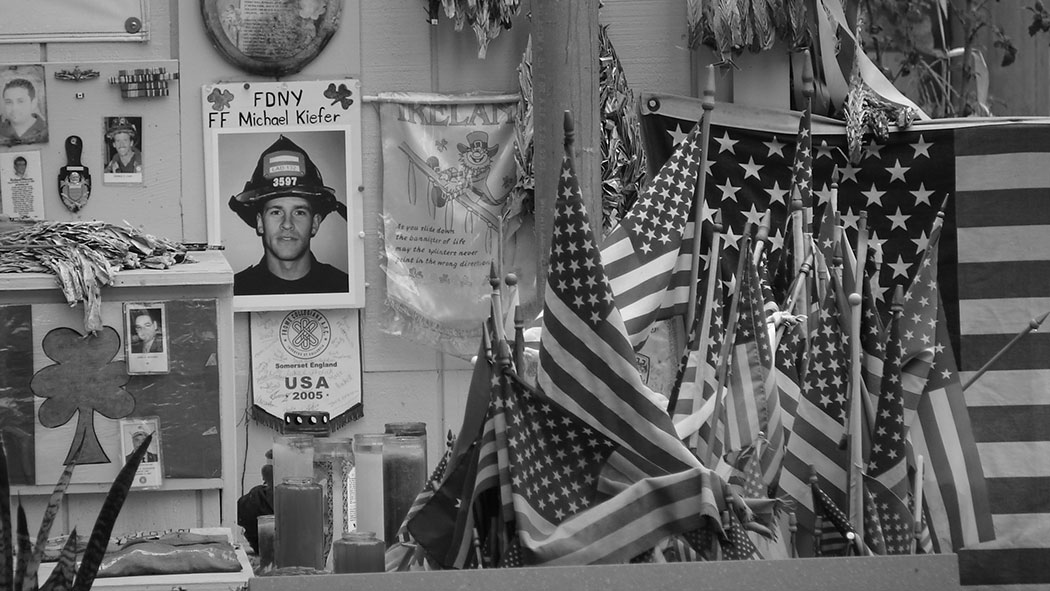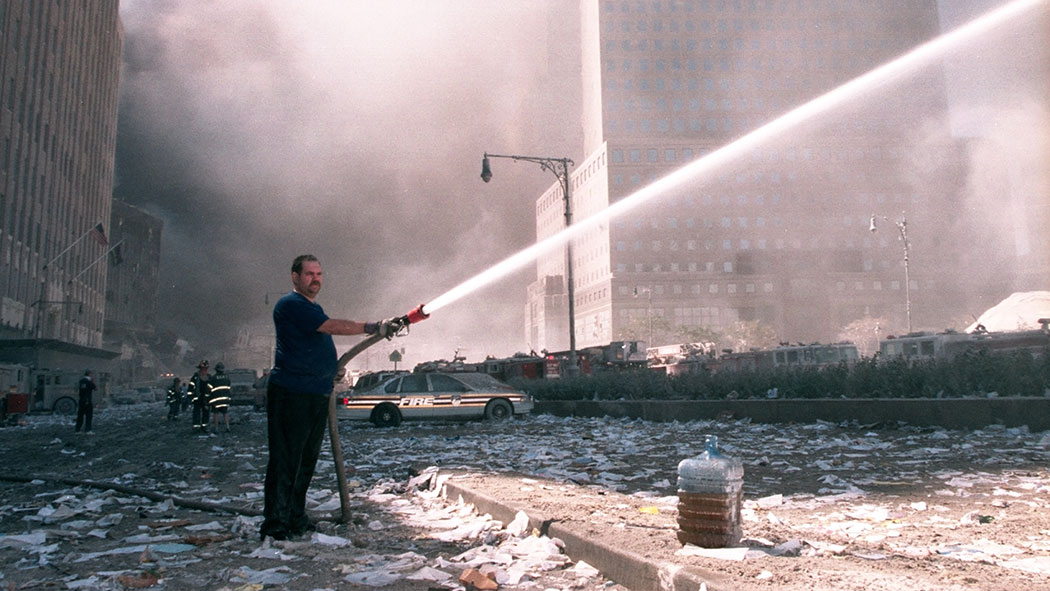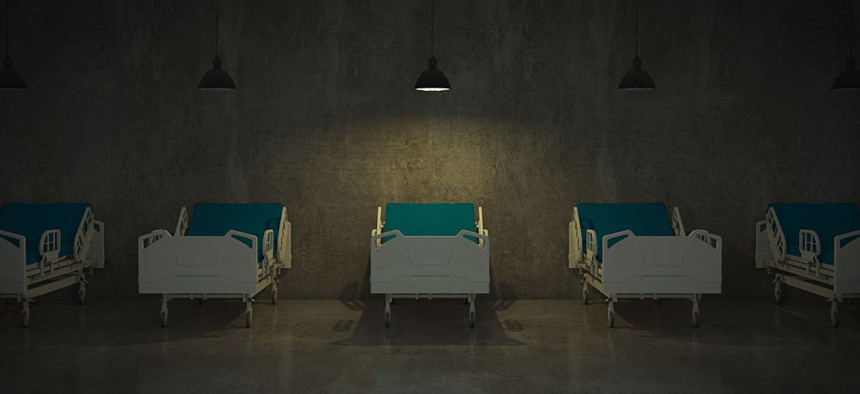After months of contentious debate, Congress this summer approved a permanent extension of the September 11th Victim Compensation Fund, which compensates survivors of the deadly 2001 terrorist attacks. Lawmakers applauded Jon Stewart, the former “Daily Show” host, for his pivotal role in drawing attention to the plight of the police officers, firefighters and others who had rushed to the World Trade Center site to help, or assisted in the cleanup, but were later diagnosed with cancer and other diseases linked to their exposure to the toxic dust and fumes. After the vote, Stewart praised the first responders who testified alongside him as the true heroes of the legislative victory. Survivors, in turn, thanked legislative leaders for finally overcoming political obstruction and passing the law.
But largely overlooked in the celebratory moment were the hundreds of thousands of people who simply lived, worked or went to school at or near the site. Many of them have also gotten sick and died in the months and years after 9/11, while many more have never even been screened for cancer, asthma and other ailments linked to the attacks.
Although these survivors are eligible for the World Trade Center Health Program, the federal program that is now fully funded by Congress, it’s much harder for them to benefit from it than first responders. Outreach is spotty, allowing countless survivors to fall through the cracks. Some do not yet have any symptoms and may not know that their exposure could result in medical problems years later. And, unlike first responders, they’re only eligible if they already have symptoms – at which point it may be too late to treat a condition.
“You absolutely want to try and catch cancers before they are symptomatic. This is part of the zeitgeist of medicine moving towards prevention.” – Dr. Joseph Fennelly
In fact, of the more than 400,000 people that experts estimate are at risk because they were in lower Manhattan on the day of the attacks or during the monthslong cleanup, only 21,636 non-first responders – or about 5 percent of the at-risk population – have been enrolled in the World Trade Center Health Program.
In contrast, of the estimated 90,000 first responders who played some role in the 9/11 response and World Trade Center site cleanup, 76,050 of them – more than 8 in 10 – already participate in the federal health program, which for them automatically offers free, annual screenings.
Dr. Joseph Fennelly, who served for decades as the chairman or co-chairman of the Medical Society of New Jersey’s bioethics committee, said that “from an ethical standpoint, there’s no question” that survivors should have the same unfettered access as first responders to regular screening without having to be symptomatic as a prerequisite.
“You absolutely want to try and catch cancers before they are symptomatic,” he said. “This is part of the zeitgeist of medicine moving towards prevention.”
Attorney Michael Barasch, a leading attorney representing 9/11 victims, agreed. “It’s outrageous that the 400,000 civilians, including downtown office workers, residents, students and teachers, are treated differently than the 100,000 first responders,” he said. “After all, they were all breathing the same toxic dust. Not surprisingly, they are all being diagnosed with the same illnesses.”
“If they don’t see a doctor from the health program, they likely will never connect the dots.” – attorney Michael Barasch
Barasch said that without free annual checkups, many of these survivors won’t learn about the risks they face. “As a result, most of them have no idea that there is a presumption linking 68 cancers to the toxins,” he said. “If they don’t see a doctor from the health program, they likely will never connect the dots. It’s time to stop treating the survivors in the 9/11 community as second-class citizens.”

A week after the twin towers fell, then-Environmental Protection Agency Administrator Christine Todd Whitman issued a statement saying that it was safe for New Yorkers to return to their everyday activities. “Given the scope of the tragedy from last week, I am glad to reassure the people of New York and Washington, D.C., that their air is safe to breath (sic) and their water is safe to drink,” Whitman said in a press release on Sept. 18.
Within two years, the EPA’s inspector general found that Whitman’s assertion had been unfounded. “When EPA made a September 18 announcement that the air was ‘safe’ to breathe, it did not have sufficient data and analyses to make such a blanket statement,” the report’s authors concluded, since “air monitoring data was lacking for several pollutants of concern, including particulate matter and polychlorinated biphenyls (PCBs).”
Moreover, the EPA’s inspector general learned that it was President George W. Bush’s White House Council on Environmental Quality that heavily edited the EPA press releases “to add reassuring statements and delete cautionary ones.” Despite the fact that samples taken indicated asbestos levels in lower Manhattan were between double and triple the EPA’s limit, the Council on Environmental Quality described the readings as “slightly above” the limit, the inspector general found.And when the inspector general tried to determine who had actually written the press releases, they “were unable to identify any EPA official who claimed ownership.”
More than a decade later, Whitman publicly apologized. “I’m very sorry that people are sick,” she told The Guardian in an interview in 2016. “I’m very sorry that people are dying and if the EPA and I in any way contributed to that, I’m sorry.” However, she continued to assert that the agency did its best “with the knowledge we had.”
“Questioning whether or not the air was safe to breathe back then was perceived as almost being unpatriotic.” – Catherine McVay Hughes, World Trade Center Scientific Technical Advisory Committee member
Catherine McVay Hughes, a former chairwoman of lower Manhattan’s Community Board 1, which includes the World Trade Center site, remembers being skeptical when Whitman proclaimed that air in lower Manhattan was safe even as the fires at the World Trade Center site were burning – and would not be fully extinguished until just before Christmas.
But Hughes, who serves on the World Trade Center Scientific/Technical Advisory Committee, said that it was taboo at the time to raise such concerns.
“First of all, I am one of the most patriotic people out there,” said Hughes, who was speaking only as a longtime member of the community. “But questioning whether or not the air was safe to breathe back then was perceived as almost being unpatriotic, and nowadays there’s scientific studies indicating how toxic and dangerous it was.”
No doubt Whitman’s reassurance and the EPA’s press releases that followed helped lower Manhattan to rebound and Wall Street to return to normalcy. It would take a few years for the scope of the tragedy to sink in as the human toll mounted from exposure to the unique cocktail of abrasive toxins released by the collapse and the fires that flared and smoldered for months.

Lila Nordstrom is one of the young adults who is enrolled in the World Trade Center Health Program. She says she’s very grateful for the peace of mind it brings her. She was a 17-year-old student at Stuyvesant High School on the day of the attacks in 2001. The school, which had about 3,000 students at the time, is a handful of blocks from the World Trade Center site.
When classes resumed, she and her classmates were sent to another high school in Brooklyn. But in October, a few weeks after Whitman had declared that the air was safe to breathe, the students were sent back to Stuyvesant. While testifying this past June to a congressional committee that was weighing reauthorization of the 9/11 Victim Compensation Fund, Nordstrom recalled the “cryptic warnings” not to use the water fountains and not to exit the building at all during the day, the “acrid smell of smoke” permeating the building, and an endless stream of trucks dumping debris from the site next to the school, with “clouds of dust” spiraling up and into the building’s air intake system.
“Suffice it to say my lungs suffered, and I certainly was not alone,” she said. “As soon as Stuyvesant students returned there were widespread reports of nosebleeds, coughs that just wouldn’t go away, chronic headaches and students suffering from a slew of worsening respiratory issues.”
“The death toll from 9/11-related illnesses is also mounting among survivors and new people continue to fall ill, many of them my age or younger.” – Nila Nordstrom, World Trade Center Health Program enrollee who was 17 on 9/11
After high school, Nordstrom went on to Vassar College, where she graduated. In 2007 she moved to California, where she struggled with her “out of control asthma.” “My entire 20s was dominated by financial panic because even asthma and GERD can be quite expensive to treat under our current health care system,” Nordstrom testified. “Adding to that stress is the fact that doctors in California, where I live, have often never seen a 9/11 survivor and don’t understand the unique health risks I face.”
Nordstrom now knows at least five classmates who have been diagnosed with lymphomas, one in remission from thyroid cancer, another in remission from testicular cancer. Other Stuyvesant alumni have been diagnosed with rare bone cancers, melanoma and male breast cancer. “What the EPA knew, but we didn’t, was that the air was not safe,” she testified. “Now, in addition to the illnesses and deaths we’re seeing among responders, the death toll from 9/11-related illnesses is also mounting among survivors and new people continue to fall ill, many of them my age or younger.”
Stuyvesant is only one of the public schools that New York City operated in the contamination zone in lower Manhattan and part of Brooklyn. After the EPA’s pronouncement that the air was safe to breathe, the city reopened 29 schools in the zone. They were attended by almost 20,000 students, while the United Federation of Teachers says there were 2,500 teachers and support staff working in those schools.
At a New York City Council hearing last year, Ellie Engler, the UFT’s top industrial hygienist at the time of the attack, blasted city government. “The Department of Education and the New York City Department of Health have done nothing, zero, to reach out to those kids and that’s what I ask you to do,” said Engler, now an aide to UFT President Michael Mulgrew.
A Department of Education spokesperson at the time of the hearing disputed Engler's assertions that the agency had not been proactive in advising students and their parents about their health risks.
Engler said that two of her former colleagues died from cancer, and in 2017, after years of respiratory issues, she was diagnosed with thyroid cancer. In her testimony, Engler said that after 9/11, a joint team from the public school system and the UFT inspected several schools that were “most directly in the path of the fallout,” and that the city and union closely monitored the status of the cleanup as schools were reopened.
However, she added, “It took years before any of us made a connection and understood the breadth of the health crisis that would befall many. Only as first responders started getting sick, with unusual cancers and multiple respiratory problems, did the real impact become public. The message had not hit home.”
The UFT now wants the New York City Council to pass legislation requiring the Department of Education to work with the Department of Health and Mental Hygiene to submit a report on outreach efforts to former students and staff members from the schools in the contamination zone. Two sources close to the negotiations said that a resolution to the controversy may be imminent.
One co-sponsor of the legislation, City Council Health Committee Chairman Mark Levine, said at a May 30 press conference that within weeks of the attack, public school employees, from principals to cafeteria workers, were back at work at dozens of schools “at enormous risk” to themselves.
"Today, this date, this city has not prepared an accounting of the staff and students," Levine said. "We don't have a comprehensive list of who they are. We have not communicated to them to let them know about the health risks we now know are very real. We have not let them know about the services and the support that are available to them as people who were at risk during those dangerous days following 9/11.”
For now, the health status of the thousands of children who attended the city’s public schools on 9/11 and the months after in lower Manhattan is largely unknown. The World Trade Center Health Program has just 791 survivors registered who are under 35, the age of the oldest of those students.

Eighteen years after the attack, there is still a lot unknown about the health of most of the people epidemiologists say were at risk from the toxic fallout.
Testifying before Congress in June, Dr. Jacqueline Moline, the director of the Northwell Health Queens World Trade Center Health Program, predicted the public health crisis has not yet peaked. Moline said that the day would come when “there are more people that died of WTC-related diseases after 9/11 than perished that horrible day.”
Yet as Moline explained in an online video about advances in screening and treating survivors, there are two different World Trade Center Health Programs: one for first responders and another for survivors. The first responders, who were involved in rescue, recovery and debris removal, undergo medical and mental health screening, monitoring and treatment, but the “presence of symptoms is not necessary to be eligible for the program.”
“Survivors include community members, local workers, building re-occupants, residents, students and cleanup workers,” Moline says. “Medical and mental health treatment is included for World Trade Center-related medical and mental health symptoms and cancers. Medical and mental health monitoring is available once people are enrolled in the program. However, it differs from the responders program in that the presence of symptoms or cancers is necessary to be program eligible.”
Hughes, the former Community Board 1 chairwoman, offered two explanations for the disparity between first responders enrolled in the program, and the share of survivors in their version of the program.
“For the survivor population, it means stepping forward to engage, whereas if you were a first responder like a firefighter or in the NYPD, your health was already being tracked,” she said. “For some of the members of the survivor community, when there is a tragedy like 9/11, you think that other people may have been exposed more or are worse off, and that if there are limited resources you want to make sure they got it, that they got what they needed.”
Barasch, the attorney representing victims, said that most of the first responders he has spoken with told him they knew what they were signing up for when they participated in the rescue and recovery operations. “The survivors, on the other hand, did not know what they were signing up for when they believed the EPA’s assessment that the air was safe and went back home, to school and to work,” Barasch said.
In her testimony to Congress, Nordstrom said that many of her classmates have long since moved to other parts of the country, and are even less likely to learn about federal medical assistance they may qualify for. “Young adults are also especially at risk of losing out on the (Victim Compensation Fund) because we face some big obstacles to even finding out about the 9/11 health services,” she said. “Many of us ... don’t have access to local information about the VCF, don’t see it reported on in local media, and don’t have local advocates. This often seems to get lost in the conversation about who needs this program and why.”
In an interview after a rally to call on Congress to renew the Victims Compensation Fund, Nordstrom said that getting that legislation signed would be just the beginning. “Our job is not over when the VCF is passed,” she said. “People are spread to the four winds, and I think it is a valuable thing to do. I know it is going to be difficult to figure out how to reach them when they have left the city and started their adult lives and moved on, but it is something the city should have an obligation to help us with.”
NEXT STORY: Celebrating the Labor Power 100


